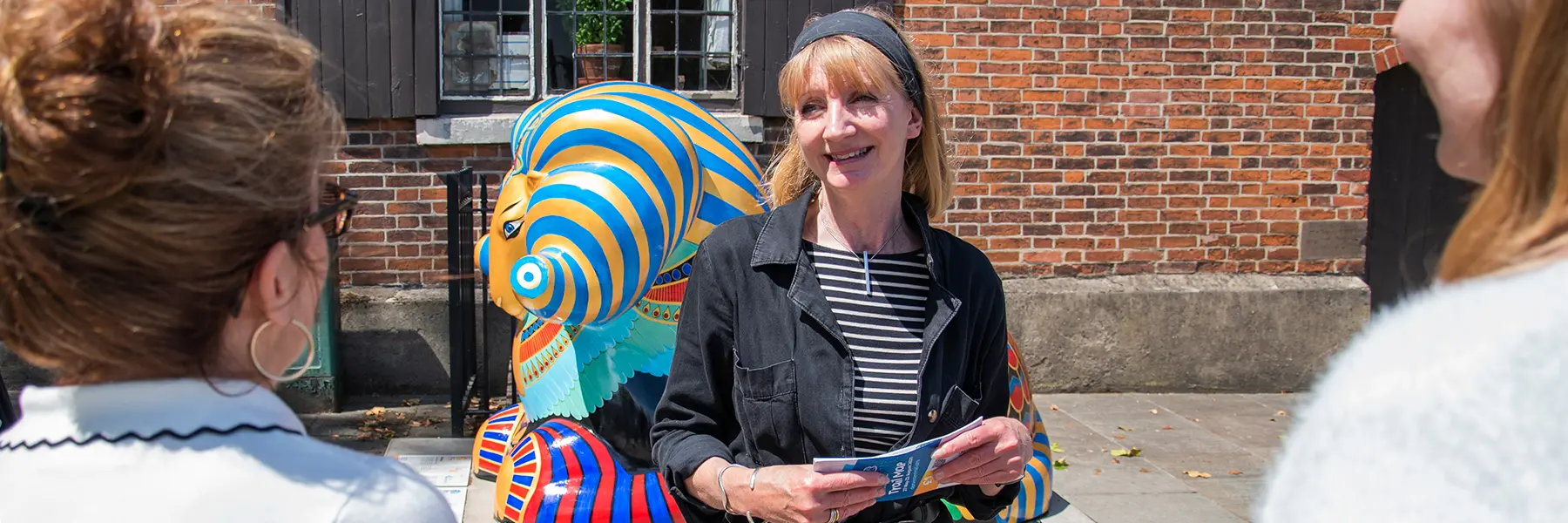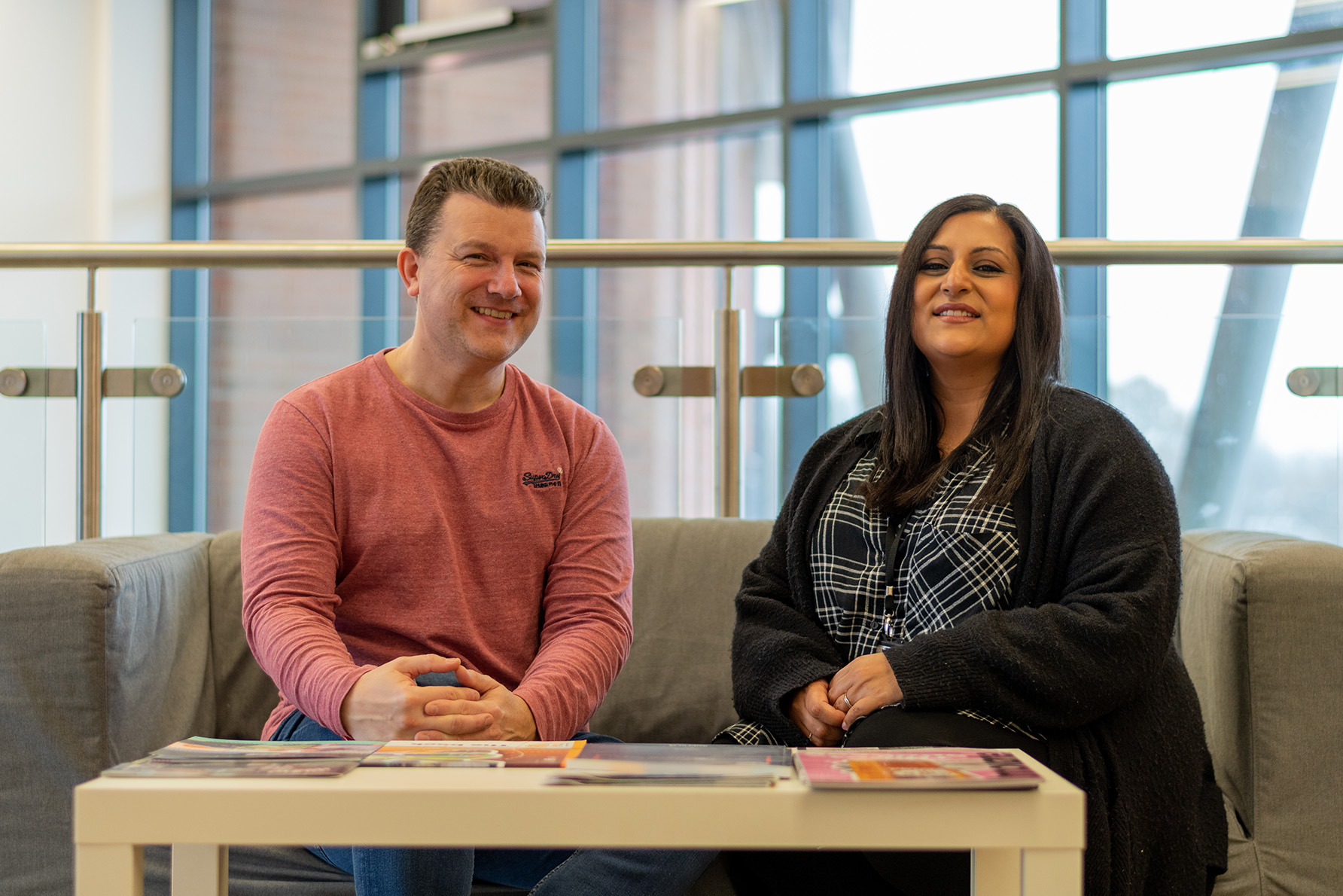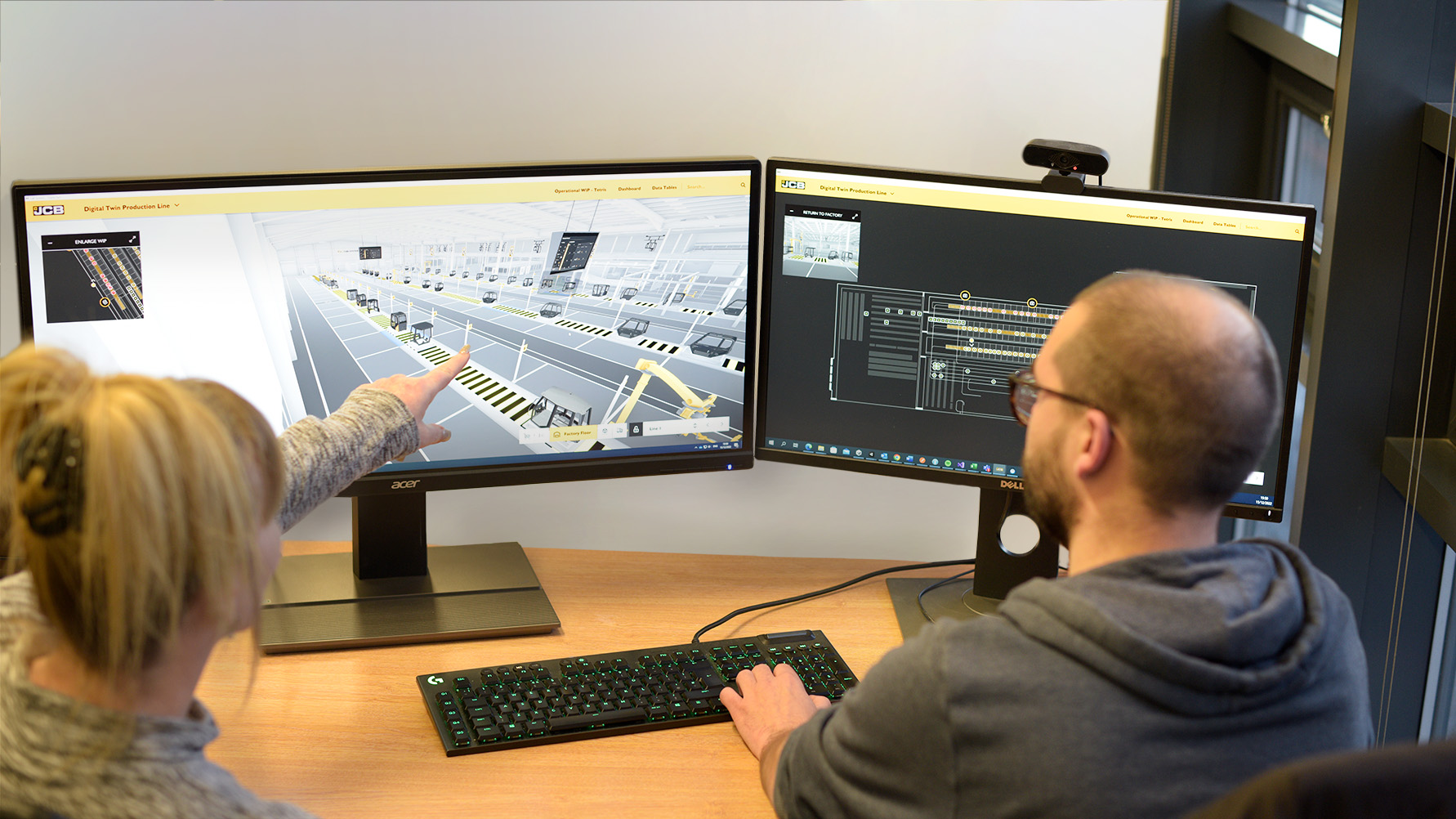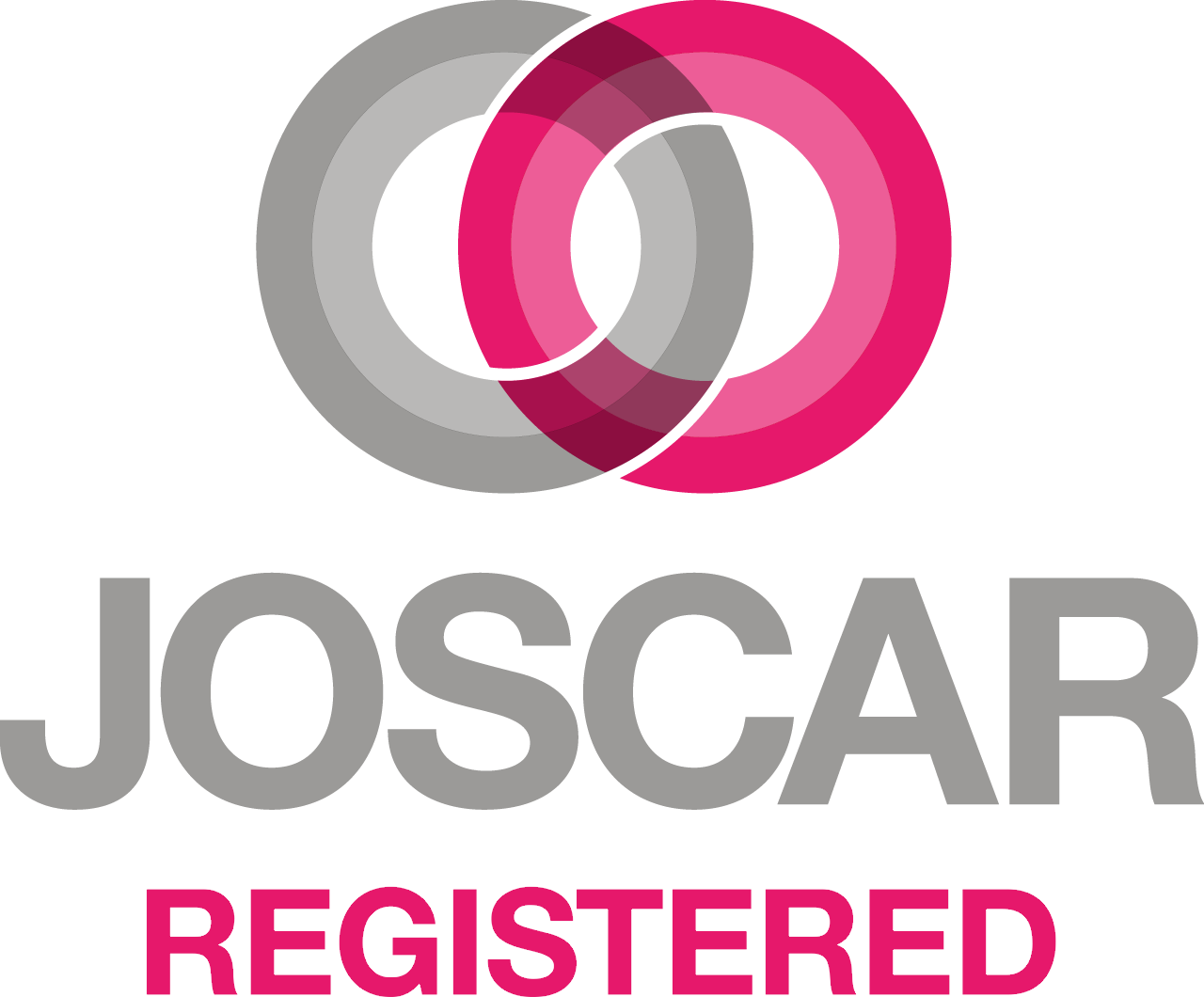Derby Ram Trail Artist Insights: An interview with Judith Berrill

Since its launch the Derby Ram Trail has been a celebration of culture and colour for both Derby residents and visitors near and far. Decorated by various artists and sponsored by local businesses, its 30 colourful rams have been dotted around the city to bring a trail of discovery, fun and inspiration for kids and adults alike.
As Derby Ram Trail creative and digital partners, not only have we been donating our branding, design and immersive capabilities to bring this exciting event to life but we’ve also been looking after our own sponsored sculptures too.
Rameses, revealed in all his glory at the start of the trail, was chosen by our Creative team for his striking impact and ties to typography and colour. He was painted by seasoned Brighton-based artist Judith Berrill, who is no stranger to a Wild in Art trail. Judith has designed sculptures for these public art events at numbers in the double digits, raising funds via their auction for the various charity organisers along the way.
Taking full advantage of the interviewing skills of our Media team, we caught up with Judith to find out more about her inspiration for Rameses’ g-lamb–orous design. Watch the full interv-ewe or follow the script below to discover her process, her advice for budding artists and her hopes for the legacy of the trail. And if you haven’t already – get down to Derby and explore the free Derby Ram Trail before the sculptures leave our streets on 25th August!
Can you tell me a little bit about yourself as an artist?
Yeah, I suppose like lots of people we all start when we’re very young, don’t we? And we’re encouraged to paint and draw and have fun, and like other children that was what I enjoyed doing.
I then had a bit of a kind of ‘stop’ because I remember a teacher being very critical of something I’d drawn when I was seven and that kind of made me think, “oh well, that’s it. That’s not what I’m going to be any good at so I’ll stop doing that.” So I didn’t, you know, I kind of halted that really until I got to secondary school and was very much encouraged then by a very good teacher.
I went on to do a Fine Art Degree and since then I’ve not stopped painting, doing graphics, set designs, theatre design as well as actually working as an HR consultant and director for many years as well. So I’ve had kind of two bits to my career. I’ve had the creative stuff and the kind of office stuff at the same time. I’ve got more time now and I do a lot more painting, drawing, graphic design and so on.
I then had a bit of a kind of ‘stop’ because I remember a teacher being very critical of something I’d drawn when I was seven and that kind of made me think, “oh well, that’s it. That’s not what I’m going to be any good at so I’ll stop doing that.” So I didn’t, you know, I kind of halted that really until I got to secondary school and was very much encouraged then by a very good teacher.
I went on to do a Fine Art Degree and since then I’ve not stopped painting, doing graphics, set designs, theatre design as well as actually working as an HR consultant and director for many years as well. So I’ve had kind of two bits to my career. I’ve had the creative stuff and the kind of office stuff at the same time. I’ve got more time now and I do a lot more painting, drawing, graphic design and so on.
How did you get into wild in art and the trails... or is this the first one that you've done?
No no, I think it was six years ago. It was just after being made redundant actually, so I had a bit more time and I was keen to do more. And they announced there was going to be a trail in Brighton where I live which was for the local Hospice and I just thought “ah, I’ll have a go – you know – I won’t get anywhere.” And snow dogs was the theme.
It was a Wild in Art trail and I was really lucky. I had two of my designs chosen, so I finished up with two snow dogs in the living room and was not really sure what I was doing cause they’re enormous where I’ve been used to… most of my work is 2-dimensional paintings.
So it was a bit nerve-wracking to start with, but since then I’ve done 12 of the Wild in Art sculptures and each one has been a very different experience. It’s been lovely working with Wild in Art, with the sponsors, with the charities and the organisations that, kind of, benefit from the Wild in Art trails. So it’s been really good for me.
It was a Wild in Art trail and I was really lucky. I had two of my designs chosen, so I finished up with two snow dogs in the living room and was not really sure what I was doing cause they’re enormous where I’ve been used to… most of my work is 2-dimensional paintings.
So it was a bit nerve-wracking to start with, but since then I’ve done 12 of the Wild in Art sculptures and each one has been a very different experience. It’s been lovely working with Wild in Art, with the sponsors, with the charities and the organisations that, kind of, benefit from the Wild in Art trails. So it’s been really good for me.
Does it bring a different aspect when you're painting on an object and, as you say, creating these personalities?
It does because you start off… the way that you enter your designs – it sits on a piece of A4 paper. I’ll get my crayons out and I kind of, you know, I look at where the sculpture is going to be and I always have kind of a story behind the design I create, which is associated with the place is going to be and so on. And then you send it off and you think, you know, ‘I won’t get anywhere.’
But then when you do get your designs accepted the whole process of moving it from that bit of A4 paper onto – in the case of the Ram, a very big creature – is… well it throws up all sorts of issues and what worked on paper doesn’t always work when you get the three-dimensional creature. But that’s part of the process and you kind of, you know there’s all these decisions you have to make and kind of think through how you’re going to resolve them. So yes – it’s good!
But then when you do get your designs accepted the whole process of moving it from that bit of A4 paper onto – in the case of the Ram, a very big creature – is… well it throws up all sorts of issues and what worked on paper doesn’t always work when you get the three-dimensional creature. But that’s part of the process and you kind of, you know there’s all these decisions you have to make and kind of think through how you’re going to resolve them. So yes – it’s good!
So, Rameses. Tell us about how Rameses was born and how that came about, and your inspiration for it.
Well, as I say I like to have a story about the designs that I do. I don’t just do a design because I like a design. I look at where the creature or the figure is going to be, so I looked at Derby. I looked at, you know, famous people that lived in Derby. I looked at… particularly at what was in the museum and gallery because they were hosting the trail, and I found out that there was a very prized pair of mummies in the museum.
So that got me thinking about Egyptian figures and characters, and then obviously Rameses – the name fitted rather well with the creature. I like the idea of the kind of Egyptian patterns and the kind of symbolism. It’s such a big statue that I wanted a design that was full of interest and covered the whole sculpture.
So yes, looking at Egyptian themes, colours, patterns. It’s a very curvy creature, so the idea of sort of curving lines with kind of repeating patterns and those glorious rich rich blues and golds. I thought it would be a nice thing to have in a street.
So the link with Derby, the link with colour and design and something that told a bit of a story… because Rameses was quite a character as well. The pharaoh, he was a great ruler – 66 years. He had something like 200 wives and 150 children. So quite a colourful character to have on the streets of Derby.
So that got me thinking about Egyptian figures and characters, and then obviously Rameses – the name fitted rather well with the creature. I like the idea of the kind of Egyptian patterns and the kind of symbolism. It’s such a big statue that I wanted a design that was full of interest and covered the whole sculpture.
So yes, looking at Egyptian themes, colours, patterns. It’s a very curvy creature, so the idea of sort of curving lines with kind of repeating patterns and those glorious rich rich blues and golds. I thought it would be a nice thing to have in a street.
So the link with Derby, the link with colour and design and something that told a bit of a story… because Rameses was quite a character as well. The pharaoh, he was a great ruler – 66 years. He had something like 200 wives and 150 children. So quite a colourful character to have on the streets of Derby.
You said that sometimes there are challenges that you hadn't anticipated from your first designs, or when you're actually painting on the creature.
Yeah, the sculpture, you would look at it and think ‘that’s symmetrical’ but actually it isn’t symmetrical at all. It’s got one hoof up and obviously it’s based on the lovely sculpture that’s in the centre of Derby.
Its bum is bigger on one side than the other, so there are all those sorts of challenges that you are dealing with as you go along – even the curly horns aren’t actually symmetrical.
So you’re kind of working all that out. I knew that he was a great… the original ‘Ramses the Great’ was grand so needed a lot of gold, so I had some very special, very expensive gold paint because I wanted it to really sort of sing out. He had to be a kind of noble creature, so that was some of the things I was thinking about.
Its bum is bigger on one side than the other, so there are all those sorts of challenges that you are dealing with as you go along – even the curly horns aren’t actually symmetrical.
So you’re kind of working all that out. I knew that he was a great… the original ‘Ramses the Great’ was grand so needed a lot of gold, so I had some very special, very expensive gold paint because I wanted it to really sort of sing out. He had to be a kind of noble creature, so that was some of the things I was thinking about.
He's great fun. And when the sun shines on him, it's just beautiful, isn't it?
I was very lucky when I visited and met your colleagues in Bloc and the sun had just come out after a very rainy day and it really did kind of sing from the corner of that street. I could see it as I was walking towards it which is which was lovely.
What would you like people to take away from the trail, particularly as they meet Rameses but some of the other designs as well?
I mean, I met a couple as we were doing the trail ourselves and they said, you know, this is great -– we’ve lived in Derby all our lives and we’ve walked around today and we’ve been to places that we didn’t know existed. So I think, and the other trails I’ve been involved with – that’s what people say that it kind of encourages people to look differently at their city.
A lot of the Rams have got Derby-specific scenes or themes and so that’s really good. But the app actually helps people discover more as well that, if they open their app they can find out little things about Derby and about the inspiration behind the different Rams.
I hope people will visit the museum. There’s the lovely little Rams in the museum, so that’s really worth seeing as they are absolutely great. Those little ones are really little gems of colour and design.
So yeah, lots to discover, lots to see. They will find out about businesses in Derby as well that they might not have known were based in Derby. So, it’s good for everyone.
A lot of the Rams have got Derby-specific scenes or themes and so that’s really good. But the app actually helps people discover more as well that, if they open their app they can find out little things about Derby and about the inspiration behind the different Rams.
I hope people will visit the museum. There’s the lovely little Rams in the museum, so that’s really worth seeing as they are absolutely great. Those little ones are really little gems of colour and design.
So yeah, lots to discover, lots to see. They will find out about businesses in Derby as well that they might not have known were based in Derby. So, it’s good for everyone.
You are talking there about the creative process and a lot of the time you're perhaps working in 2D in a studio. Where do you actually paint and create these creatures because some of them are pretty big?
The Rams… Rameses is probably the biggest I’ve had. There was a very large bee that I did for Manchester that was pretty huge.
I’ve got a very understanding partner and where I normally paint is here, which is the top floor of the house and they can’t – I can’t get them upstairs. And with Rameses I couldn’t even get him through the garden gate.
So often I’ll do them in the living room so we’ll be sitting there watching the telly and they’ll be a hare and a bee and a lighthouse in there. But for Rameses I had to find somewhere else, so it was a bit of a struggle to find somewhere big enough, but it was during lockdown that I did the painting and I was lucky enough to persuade a theatre company to let me use their workshop in exchange for doing a bit of set painting. And that was perfect because they obviously weren’t putting on shows. The workshop was sitting being unused, and so I was able to wheel him in there and then get on with him there, which was great.
I’ve got a very understanding partner and where I normally paint is here, which is the top floor of the house and they can’t – I can’t get them upstairs. And with Rameses I couldn’t even get him through the garden gate.
So often I’ll do them in the living room so we’ll be sitting there watching the telly and they’ll be a hare and a bee and a lighthouse in there. But for Rameses I had to find somewhere else, so it was a bit of a struggle to find somewhere big enough, but it was during lockdown that I did the painting and I was lucky enough to persuade a theatre company to let me use their workshop in exchange for doing a bit of set painting. And that was perfect because they obviously weren’t putting on shows. The workshop was sitting being unused, and so I was able to wheel him in there and then get on with him there, which was great.
A large part of the tour is about participation and inspiration, and you mentioned there about the little rams that we’ve seen. The mini rams that children, local school children have been designing. What would you say to perhaps budding artists of old and young? And about what they should be thinking about how they should be perhaps approaching their art.
Just do it! Don’t be put off like I was when I was seven. You don’t need any special equipment. I do my designs with… I’ve got a box of crayons here and that’s how I start. I just draw and doodle, choose colours that I like. I just do it, do it lots and yeah just enjoy it I guess. And keep doing.
I think so often we stop drawing don’t we… lots of it when we’re little and then somewhere along the line we just stop doing it. And then we think ‘I’m not very good at it. I’m not going to do it’, so just keep doing it and it’s great fun. Whatever age you are, and you get a lot out of it.
I think so often we stop drawing don’t we… lots of it when we’re little and then somewhere along the line we just stop doing it. And then we think ‘I’m not very good at it. I’m not going to do it’, so just keep doing it and it’s great fun. Whatever age you are, and you get a lot out of it.
You were talking there about the different communities coming together for the tour, but also the communities coming together again for the auction. Because these tours really do have a life beyond the summer of seeing the rams in the city. Can you tell us a little bit about your experience with the auctions and where some of your wonderful creations have ended up?
The auctions are a little bit nerve-racking, especially if you’ve got something that’s being auctioned. But they are great fun and Derby’s got Charles Hanson doing the auction – It’s absolutely great to have a professional auctioneer doing it because they make it a real event. You know it’s a fantastic thing to attend and they’re really good at kind of, you know, getting the enthusiasm going and so on.
They raise a lot of money as well, which is, you know, the necessary part of actually holding the trail. So you don’t always know where your statue has gone but I have… I’m lucky enough to know where a few of mine have gone and people have kept in touch and I get photographs occasionally. There was a snail that I did for the Brighton trail and the family that bought it, they send me regular photographs of this snail.
But yeah, the money… On average the ones I’ve done have sold for seven or £8,000 each. The Bee in Manchester was £16,000 which was a great result. But they’re great. You know they’re a unique piece of art and the Rams are so essentially Derby I can’t imagine any other city doing them to be honest, because they’re just so much part of Derby’s history. So it’s the chance to have something unique and they, you know, they go outside and will be long lasting, and I think the auction will be great fun.
They raise a lot of money as well, which is, you know, the necessary part of actually holding the trail. So you don’t always know where your statue has gone but I have… I’m lucky enough to know where a few of mine have gone and people have kept in touch and I get photographs occasionally. There was a snail that I did for the Brighton trail and the family that bought it, they send me regular photographs of this snail.
But yeah, the money… On average the ones I’ve done have sold for seven or £8,000 each. The Bee in Manchester was £16,000 which was a great result. But they’re great. You know they’re a unique piece of art and the Rams are so essentially Derby I can’t imagine any other city doing them to be honest, because they’re just so much part of Derby’s history. So it’s the chance to have something unique and they, you know, they go outside and will be long lasting, and I think the auction will be great fun.
Just one final thought about Rameses as we’re coming to the end of the tour quite soon, and you move on to the next one. Do you still think about the other sculptures that you’ve done over time?
I do I suppose because I get reminders from some people. I’ve obviously never repeated a design, I’m always moving on to the next one. It’s always a new story that I have to tell. I suppose the first ones have a special place because that was so exciting to put in designs and have them accepted.
But yeah, they’re all a different challenge. They’ve all been great fun. I’ve visited places I would never have gone to otherwise. I’ve met people that I wouldn’t have met otherwise, and it’s been… It’s been a great experience for me as an artist. It really has.
But yeah, they’re all a different challenge. They’ve all been great fun. I’ve visited places I would never have gone to otherwise. I’ve met people that I wouldn’t have met otherwise, and it’s been… It’s been a great experience for me as an artist. It really has.





